Words by antoine lefebvre editions
English version | Lire la version française →
Issue N.20
Sept. 2020
Author: antoine lefebvre editions
Font: N/A
± 500 copies
For the 20th issue of the magazine, antoine lefebvre editions and La Perruque have published a facsimile of a 2 × 90 cm tract from the Situationist International, distributed during the general assembly of the International Association of Art Critics on April 14th, 1958, part of the 1958 Brussels World’s Fair (Expo 58). The document declares: “To the producers of modern art. If you are tired of imitating rubble; if it appears to you that the fragmentary repetitions that are expected of you are outdated before even coming to life, please contact us to organize new powers of transformation of the ambient environment at a higher level. Situationist International, 32 rue de la Montagne-Geneviève, Paris 5e”
When I started the experimental publishing project La Bibliothèque Fantastique (LBF), one of the founding acts of this endeavour was to transform the name and title on the cover of a book. Noces, Suivi de L’Été by Albert Camus became Notes, Suivi de L’Été, a small zine-like artist book gathering notes from my sketch book. My typographical knowledge was quite limited, hence my technique was to compare the original text with all the fonts on my computer. When I couldn't find the right one, I would take what came closest to it, adjusting the kerning between letters. Henceforth, no cover of LBF can be considered more successful than another, since the purpose of this détournement [1] was precisely not to make graphic design, but rather to push the responsibility to others: to the artists who would choose the cover of their books or to the people who designed the original cover.
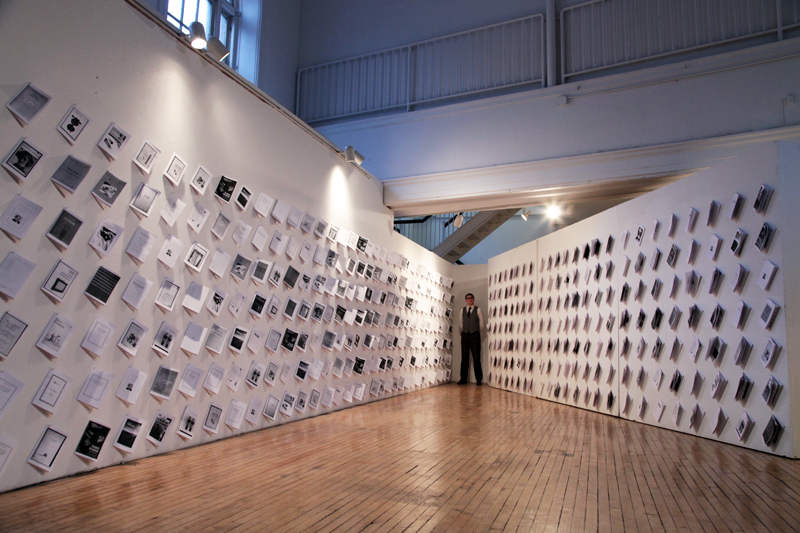
Another important aspect of LBF is its pirate dimension and the copyright issues that derive from it. As my research progressed, I was more and more interested in artist books and their accessibility. While idealistic artists—who created the genre of artist books in the 1960s and 1970s—were enticed by its supposed democratic dimension, it has since been undermined by speculation and price inflation on the original editions.[2] The pirate box I made contains about 20 artist books that I found online as PDF files or that I scanned in libraries. One of them has also a special status: I recreated it only from reproductions in books instead of the actual piece, which I had never seen in real life. It is the redacted version of Un Coup de dés n’abolira jamais le hasard by Marcel Broodthaers, for which I reproduced the iconoclastic gesture of the Belgian artist by replacing each word or group of words from Mallarmé's poem by a black rectangle of the same size.
Since LBF, I have been regularly producing unauthorized reprints of works that I feel are both important and not readily available. Like the copyist painters who reproduce pictures in front of the originals in museums, I usually modify some aspects so that the copies differ from the original. Most often the format differs. Indeed, when museums give their permission to a copyist to spend days painting in front of an original work, they usually require that the format of the copy be different so that it cannot be considered forgery. Far from the reprints, which are strictly similar to the original editions, my bootleg editions and other détournements correspond more to variations that painters would make of a famous artwork, tributes to the artist they admire.
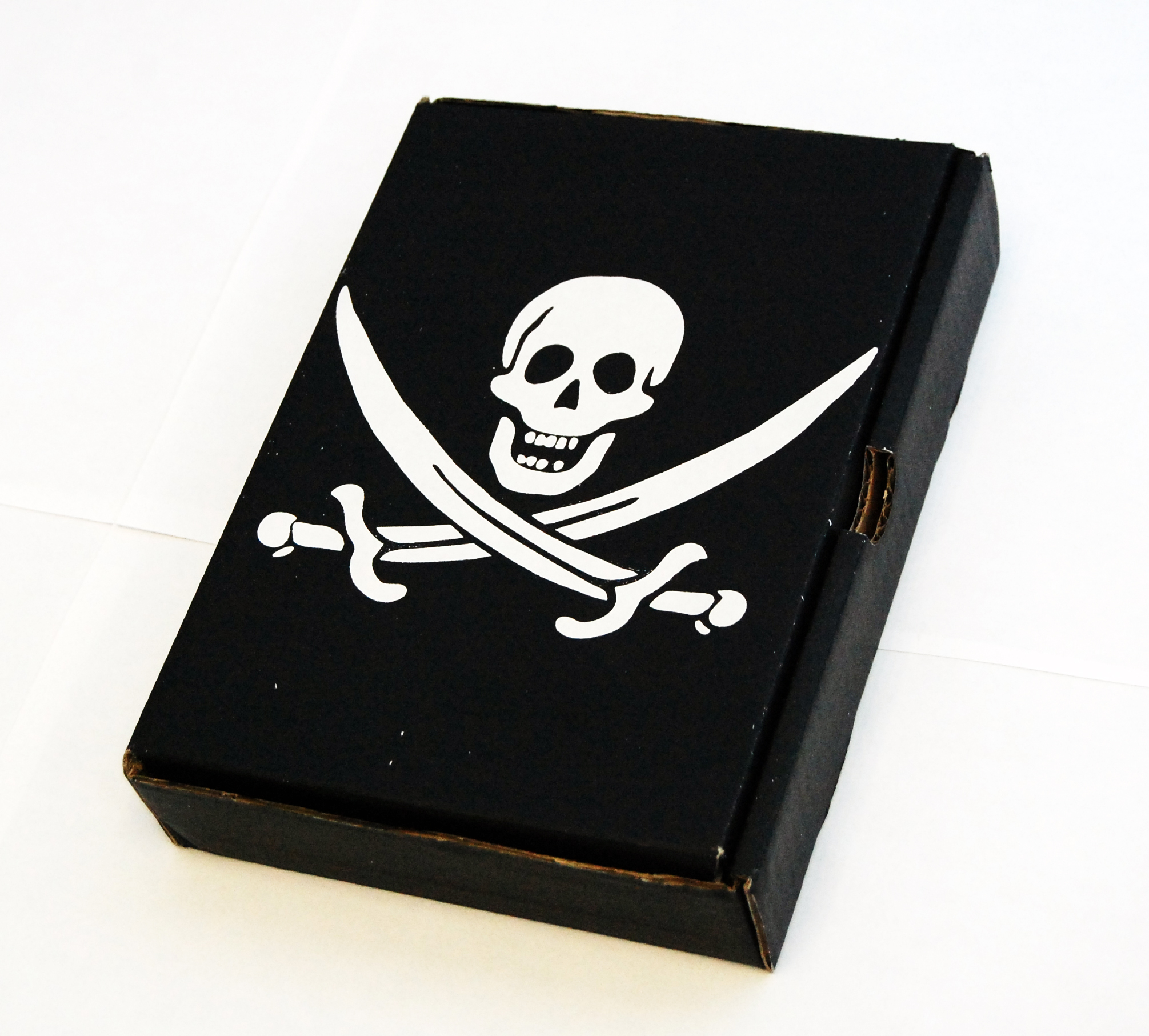
Antoine Lefebvre, Boîte Pirate, La Bibliothèque Fantastique, 2010.
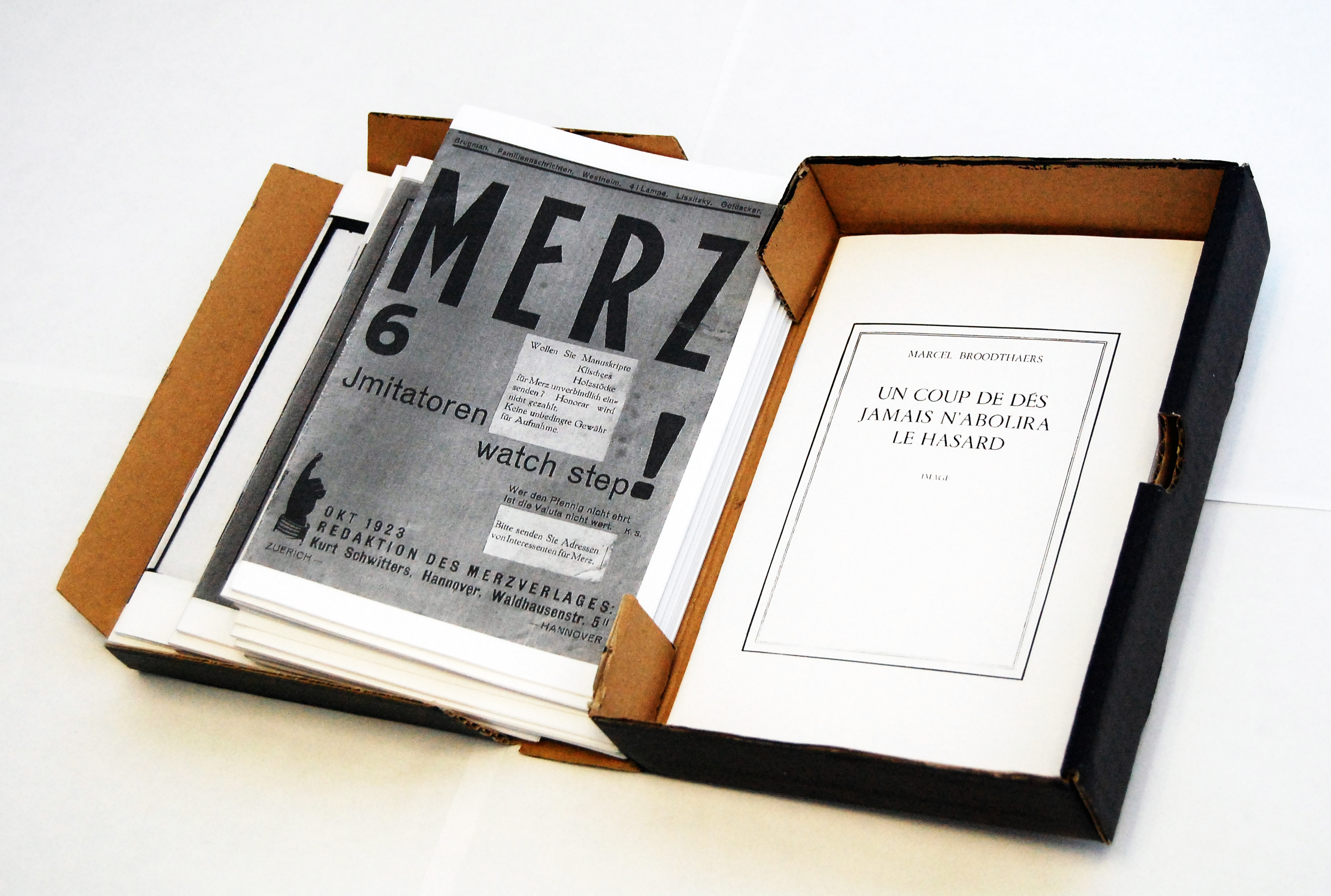
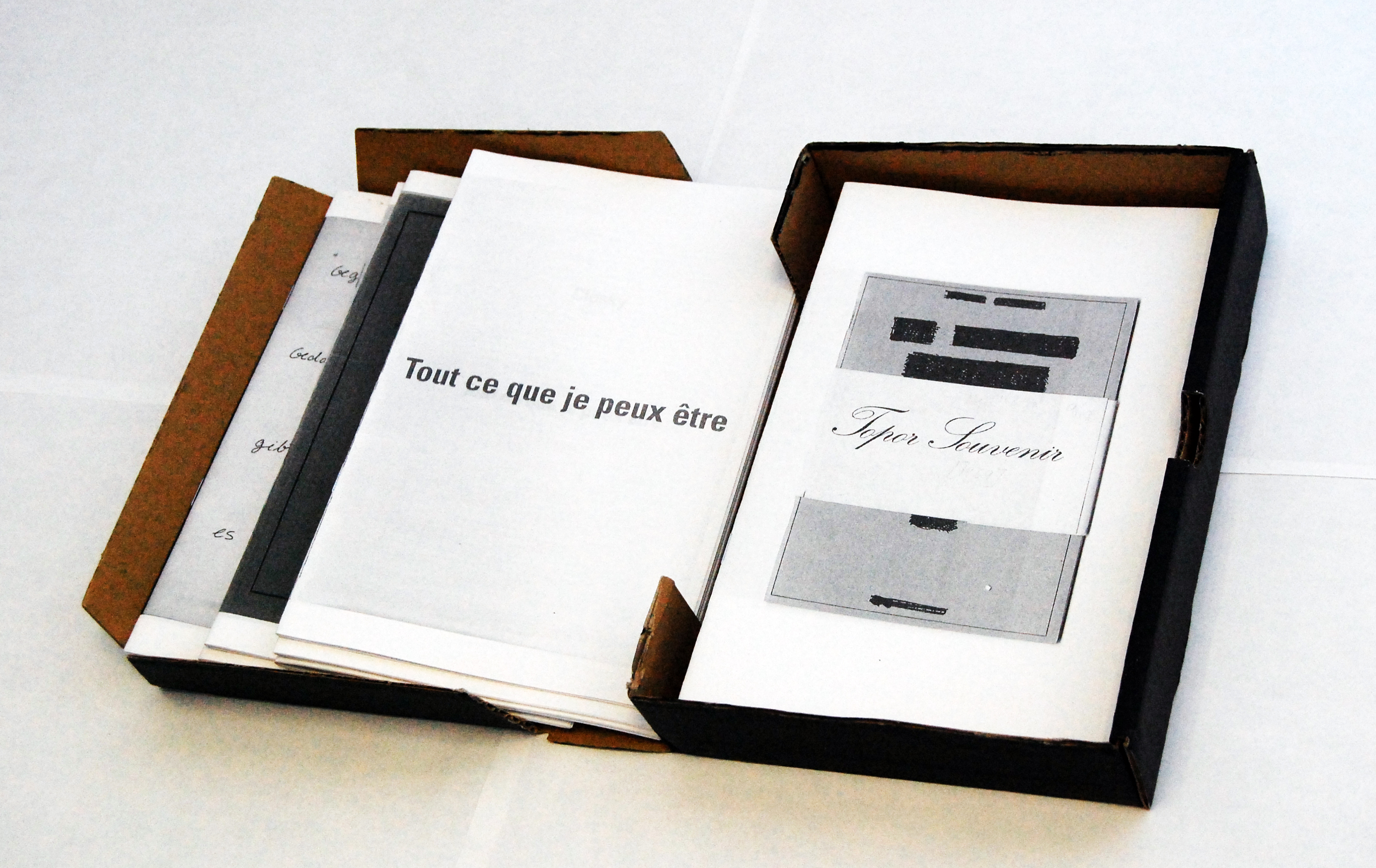
As I was in New York in 2016 at the time of Marcel Broodthaers' MoMA retrospective, I wanted to produce a fanzine on the Belgian artist with friends. This fanzine gathers an article on his artist books, an interview with Filip Noterdaeme, and artistic contributions. There is also a pirate version of Broodthaers' artist book Magie, Art et Politique: a strange and ironic book composed of, among other things, an open letter to Joseph Beuys in French, German and English. I already had the opportunity to consult a copy of this book in very poor conditions. It is from the bad photos I had taken that I reset the text identically in Baskerville, keeping only the images of the original. As I was printing it in the US at a copy shop, I also converted the A5 book format to the US equivalent, the half letter.
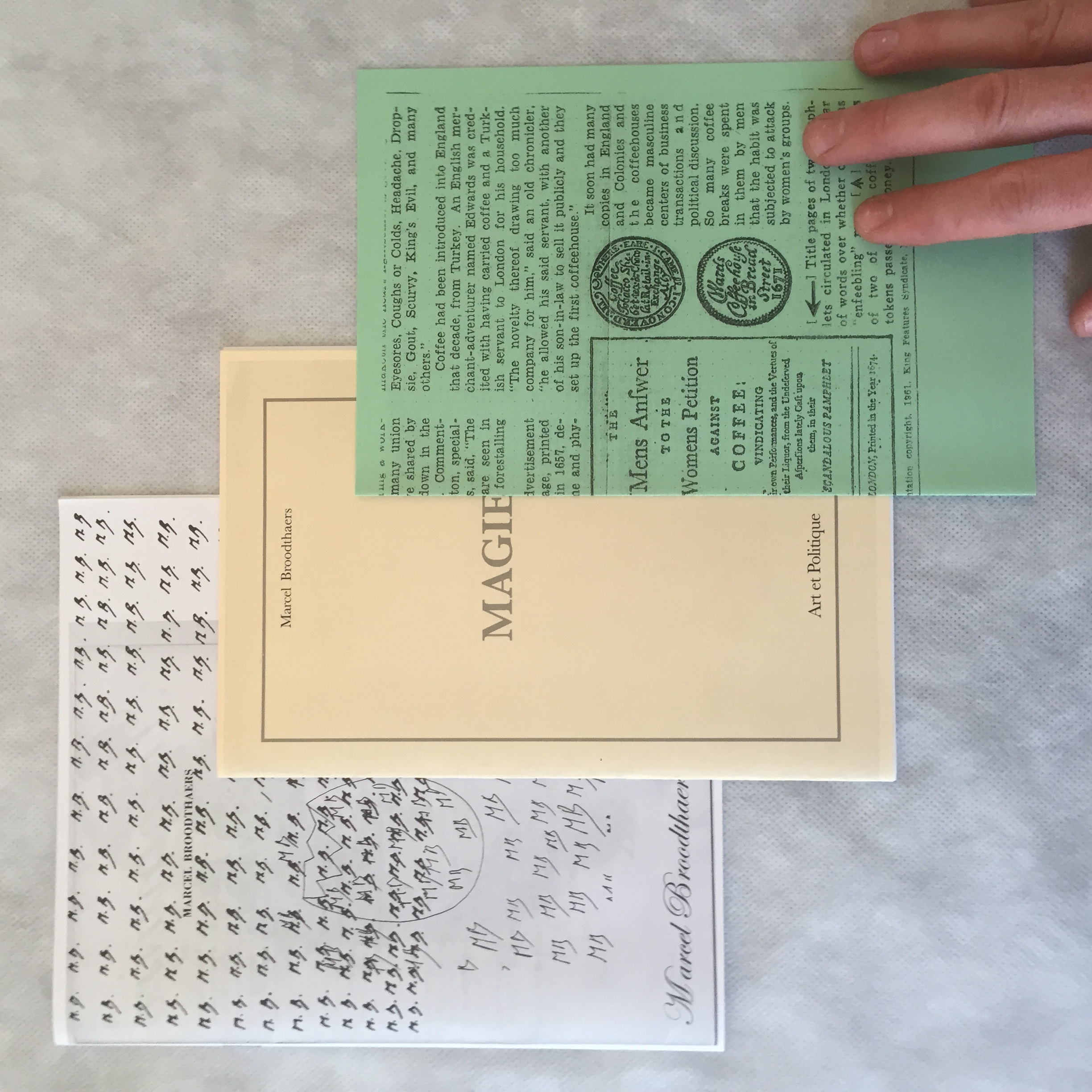
Collectif, Marcel Broodthaers Fanzine, antoine lefebvre editions, 2016.
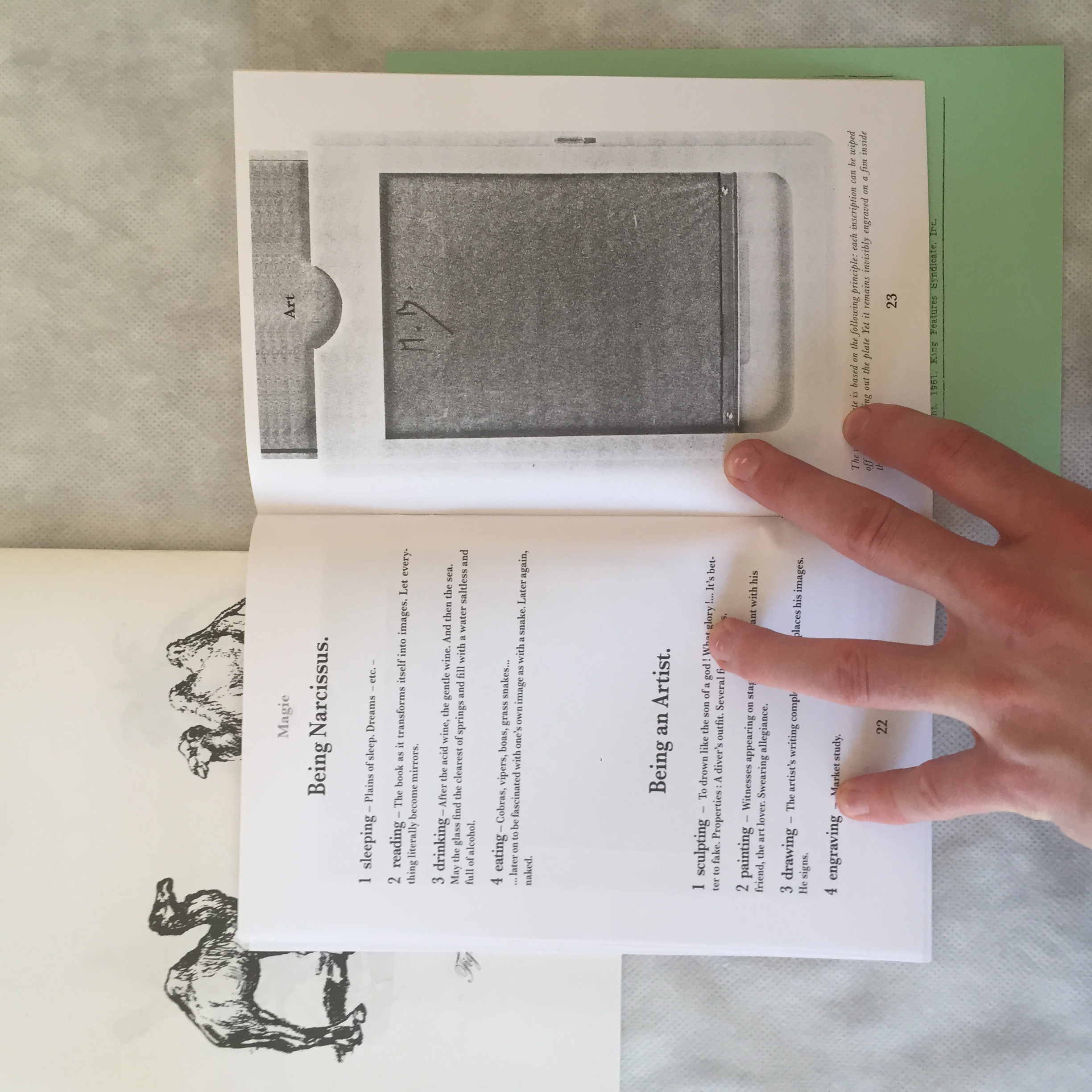
For Monuments of Passaic, the article/artwork Robert Smithson published in ArtForum in 1967, I adapted ArtForum's generous square format to that of an A5 booklet. I decided to divide the three columns of the original artwork into two columns and cut where the pages ended. Unfortunately, the fonts didn’t match the original at all, a mistake that I hope to fix in a second edition.
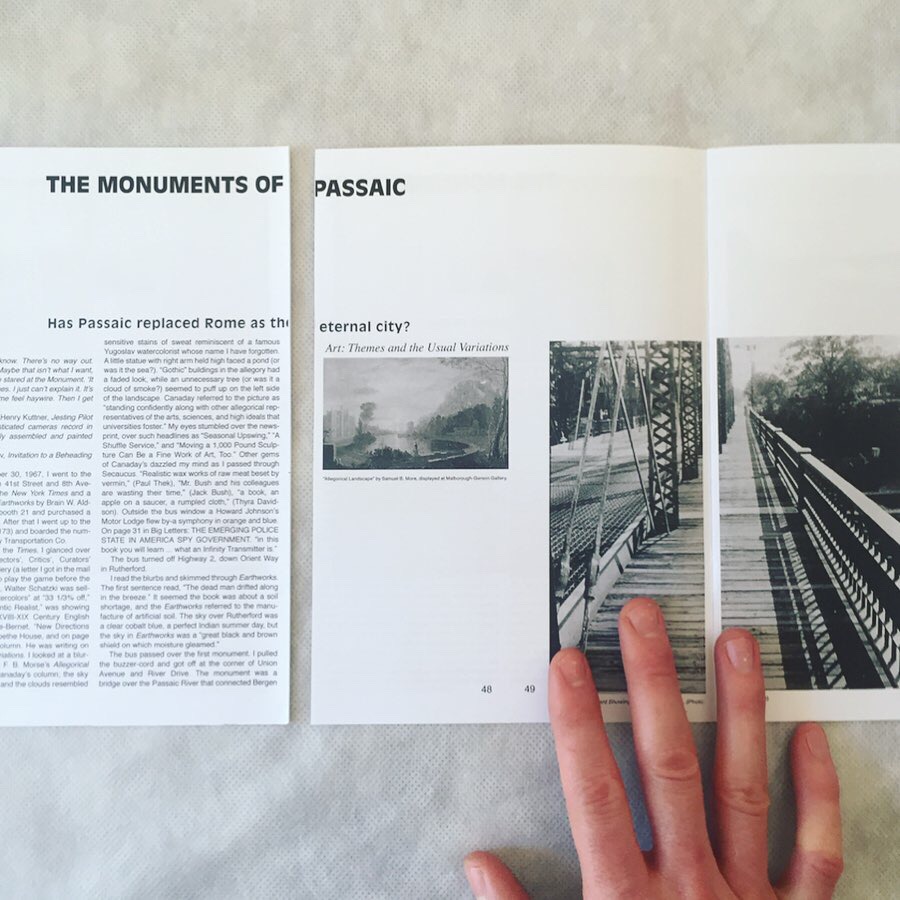
Robert Smithson, Monuments of Passaic, antoine lefebvre editions, 2015.
To publish and design Growl by Filip Noterdaeme, I sought advice from a typographer who helped me identify Albertus and different Baskervilles in the original design of the famous Pocket Poets Series. After rewriting Gertrude Stein's The Autobiography of Alice B. Toklas from the point of view of his companion, titling it The Autobiography of Daniel J. Isengart, Noterdaeme addressed another monument of American culture. Taking the iconic design of The Pocket Poets Series and the famous Allen Ginsberg's Howl in it, he transformed the title into Growl. While Ginsberg described the beat generation as "the best minds of his generation," Noterdaeme speaks of "the worst minds of his generation." No word sticks to the original in Noterdaeme’s Growl, but much like his rewriting of Stein, he appropriated the style and structure of the sentences so well that their length matches those of Ginsberg. The layout makes use of the same rigor by respecting the original typographic composition, the line spacing and the kerning of the original book.
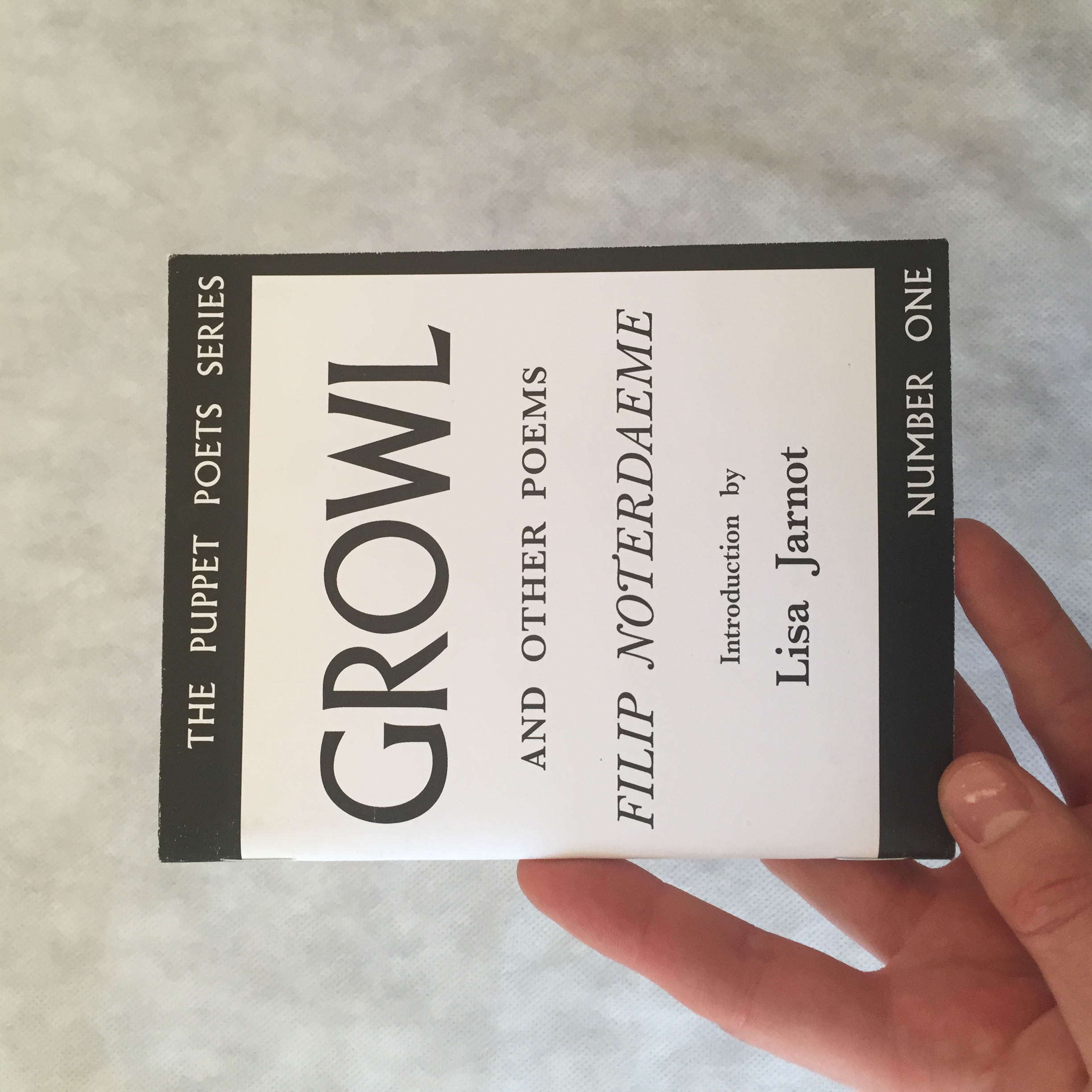
Filip Noterdaeme, Growl, antoine lefebvre editions, 2016.
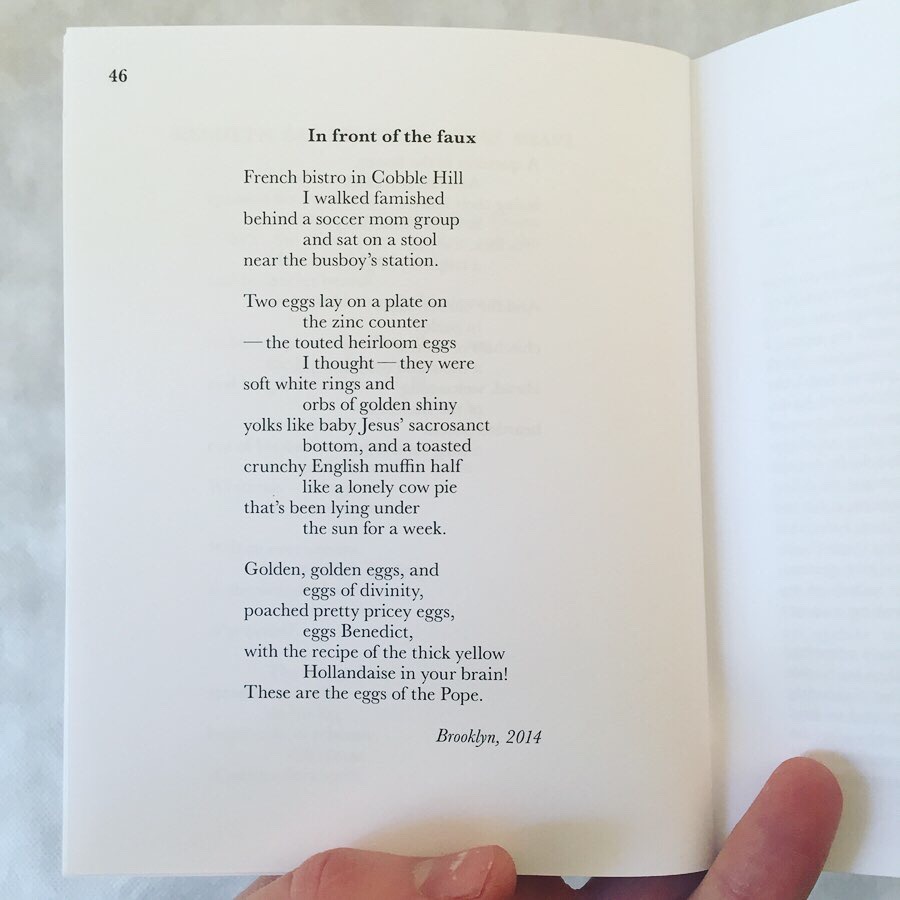
In addition to its Pirate Library, the LBF website also offers a Situationist Library, which contains magazines, brochures, leaflets and posters produced by the Situationist International and its followers. With a copyleft spirit, this selection does not strictly belong to a Pirate Library: the Situationists already mentioned in their works that “this text can be freely reproduced, translated or adapted, even without indication of origin.”
When I realized that one of the rarest ephemeras of this group was almost in the same (unusual) format as La Perruque, I felt compelled to make a bootleg reprint in collaboration with the magazine, for which I cropped the margins of the original tract to make it fit (from 2 × 90 cm to 1 × 90 cm). There is hardly any information about this tract in the writings on the Situationist International, but one can easily imagine that its singular format stems from the same publishing approach as La Perruque: the complicity of a printer who must have let the Situationists slip this tract into the margins of a regular printing job: a kind of “anticipatory plagiarism,” as Pierre Bayard would say.[3]
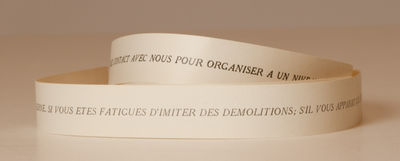
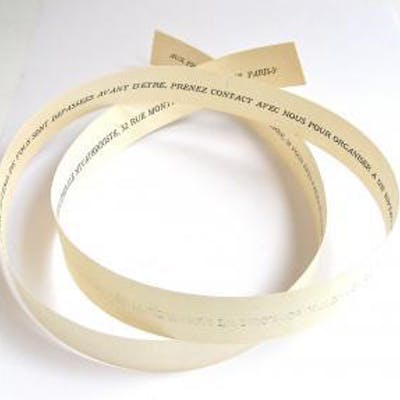
Aux producteurs de l'art moderne, International Situationniste, Paris, 1958.
Notes
Guy-Ernest Debord et Gil J. Wolman, «Mode d’emploi du détournement», Les Lèvres Nues, n° 8, Bruxelles, mai 1956, p. 5. ↩
Jérôme Dupeyrat, «“As cheap and accessible as comic books” : l’utopie démocratique du livre d’artiste», ∆⅄⎈, n°3, Bruxelles, BAT édition, 2012, p. 18. ↩
Pierre Bayard, Le Plagiat par anticipation, Paris, Éditions de Minuit, 2010. ↩
This ephemera was reproduced thanks to the digitalized files from the collection of “Documents relatifs aux Internationales lettriste et situationniste” of Allia publishing house.
antoine lefebvre editions is an artist publisher and researcher. He is the creator of La Bibliothèque Fantastique (2009-2013). He collaborates with Farah Khelil on the bookworm project. He published 12,5 issues of ARTZINES (2015-2018). He created Copie Machine with Laura Morsch-Kihn. In 2017, he co-founded DYSFUNCTION Journal . In 2018, he opened 本 \hon\ books in Paris.
Links:
editions@antoinelefebvre.net • antoinelefebvre.net • Instagram • Issuu • Vimeo